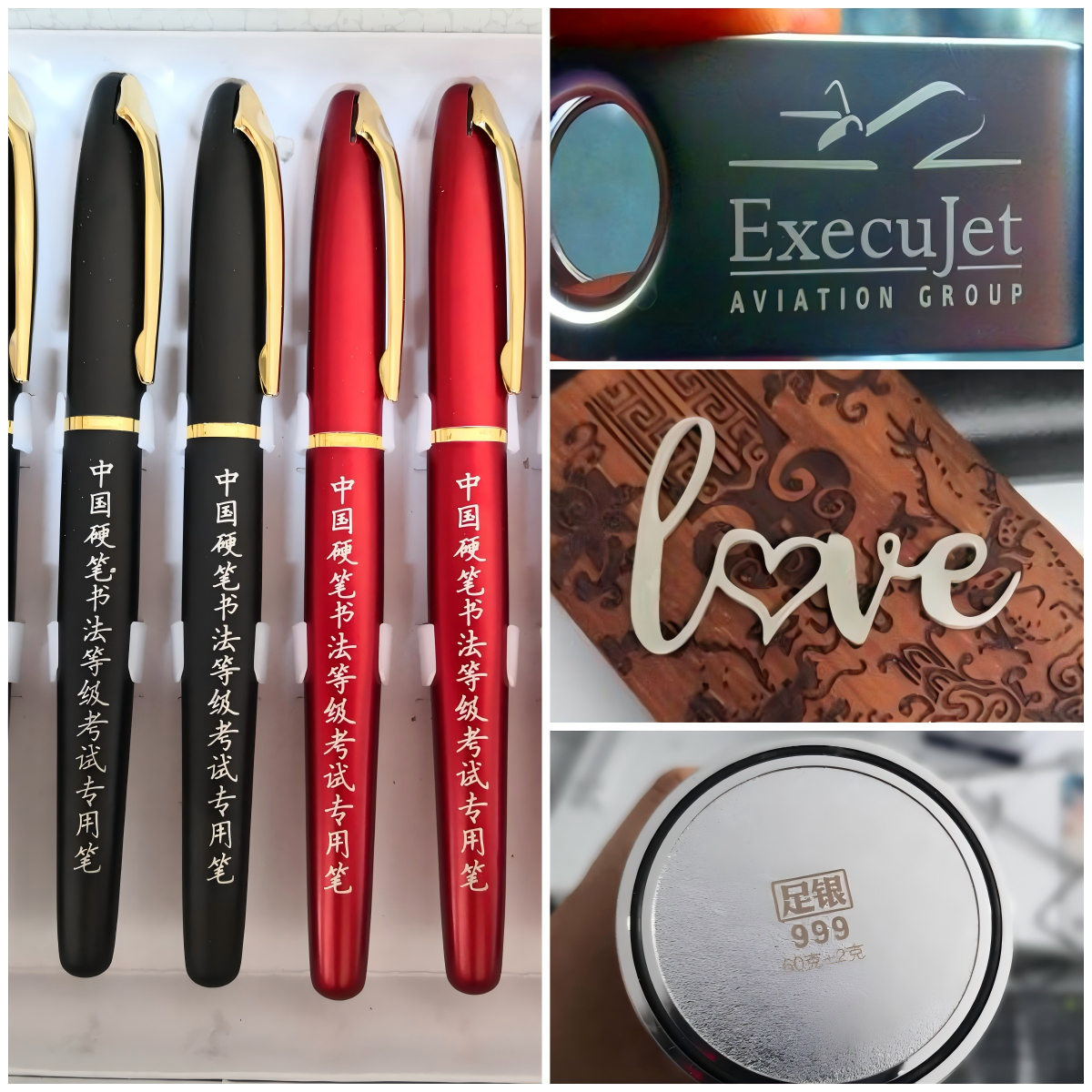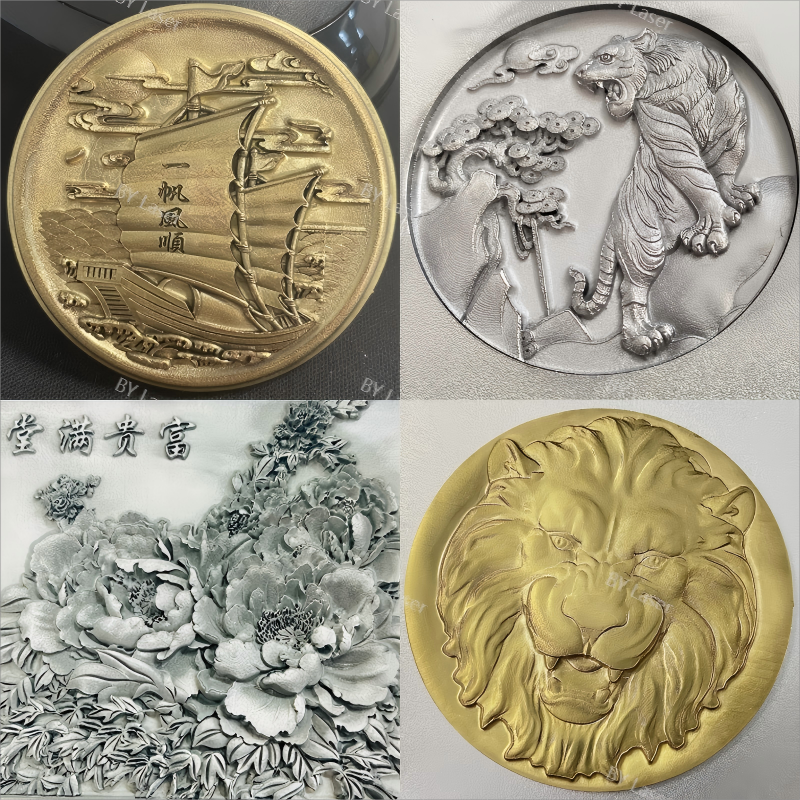Laser marking technology offers a sophisticated solution to creating permanent marks on diverse materials, all through the employment of focused laser beams. This process fundamentally alters surface characteristics without compromising the material's integrity. At the heart of this technology lie principles of optics and thermodynamics. The laser generates intense heat, triggering a controlled reaction on the surface of the material. This results in a durable mark, precise and resilient even in challenging conditions. Various types of lasers, including fiber, CO2, and UV, cater to specific applications, ensuring that each marking task is accomplished with enhanced efficiency and precision. Fiber lasers, for instance, are ideal for metals, while CO2 lasers are used for organic materials like wood and leather. This versatility in application exemplifies the adaptability of laser marking machines across different industrial needs.
Laser marking stands head and shoulders above traditional marking techniques such as inkjet and embossing, primarily due to its superior speed and accuracy. Traditional methods often require more maintenance and frequent re-tagging, whereas laser marking creates permanent marks, virtually eliminating these needs. This permanence means significant savings in both time and costs in the long run. Furthermore, laser marking holds an eco-friendly advantage, as it negates the necessity for consumables like inks and solvents, which are prevalent in older methods. This aligns well with modern environmental considerations, presenting laser marking as not just a technologically advanced option but also an environmentally responsible one. With its combination of precision, efficiency, and environmental benefits, laser marking not only enhances operational processes but also supports sustainable practices in industries worldwide.
In the automotive industry, precision part identification and traceability are paramount, and laser marking ensures permanent identification on parts, facilitating traceability in cases of recalls or defects. With laser technology, intricate markers, including barcodes and QR codes, can be applied, significantly enhancing inventory management. Furthermore, leading automotive manufacturers have reported benefits such as enhanced quality control and reduced costs due to the automation capabilities of laser marking machines. This enables them to maintain high standards with reduced manual intervention, ultimately boosting efficiency.

The aerospace industry relies heavily on laser marking for compliance with stringent regulatory standards due to the precision this technology offers. Laser markings on aerospace components are built to last, retaining their integrity under extreme conditions such as high temperatures and pressure variations. Recent advancements have further accelerated the marking processes while ensuring compliance, providing a robust solution that meets both regulatory and operational demands in aerospace manufacturing.
In the electronics sector, laser marking technology is vital for micro-marking, which is crucial for saving space on circuit boards. This ability to mark intricate patterns without compromising sensitive components makes laser marking indispensable for electronic identification. It enhances the reliability of electronic products by enabling precise and permanent markers that withstand various operational conditions. This precision ensures that even the smallest electronic components can be effectively and uniquely identified during production and use.
Laser marking plays a critical role in the medical device industry by ensuring safety and traceability through permanent markings. Due to the highly regulated nature of this industry, laser technology is beneficial for creating clear and durable markings on the diverse materials used in medical devices. Furthermore, innovative applications of laser marking technology contribute to improving the sterilization process, adding an extra layer of safety. Such precision offers significant advantages in compliance with healthcare regulations and standards, protecting both manufacturers and users.

Laser welding and marking technologies can synergize to significantly enhance manufacturing efficiencies. While laser welding focuses on providing the structural integrity needed in joined materials, laser marking ensures that components are easily identifiable through permanent inscriptions. By incorporating these technologies into a single workflow, manufacturers can minimize processing times and enhance throughput. Utilizing both techniques collaboratively often leads to cost savings and improved product quality, creating robust production solutions that meet the demands of modern-day manufacturing.
Deciding between laser cleaning and marking solutions is pivotal depending on specific production goals and material conditions. Laser cleaning is particularly beneficial when surface preparation is necessary before marking, especially in industries where contaminants might hinder marking accuracy. It's essential to understand that cleaning is more concerned with maintenance, whereas marking is about permanent identification. The choice between these technologies hinges on the desired durability of the markings and the specific needs of the production process, ensuring the appropriate method aligns with long-term operational objectives.
Fiber lasers have gained prominence in the field of metal marking due to their remarkable speed and accuracy. Their ability to effectively mark a variety of metal types, such as aluminum and stainless steel, showcases their flexibility in diverse applications. By integrating fiber lasers into operations, companies can notably reduce operational costs compared to traditional marking systems. This efficiency is primarily due to the high precision offered by fiber lasers, making them optimal for industries requiring exactness, like automotive and aerospace. As a result, fiber lasers are becoming increasingly recognized as a cost-effective choice in manufacturing processes where speed and versatility are crucial.
When it comes to marking sensitive materials, UV lasers shine by minimizing heat damage, thereby maintaining the integrity of delicate surfaces. This capability makes UV lasers invaluable in industries such as cosmetics and electronics where precision is non-negotiable. By using UV lasers, manufacturers can enhance product aesthetics while simultaneously ensuring compliance with stringent quality standards. This dual advantage stems from the laser's ability to execute detailed engravings without affecting the material's structural characteristics, as validated by industry feedback. The precision and care offered by UV lasers make them a preferred choice for applications where material sensitivity is paramount.
Identifying the right laser marking machine involves assessing the material compatibility because various lasers work best with specific materials. Metals usually require different laser wavelengths and power outputs compared to plastics or ceramics. For instance, fiber lasers are commonly used for metal marking due to their high beam quality and reliability, whereas CO2 lasers are more versatile for marking on materials such as wood, glass, and some plastics. Conducting a comprehensive analysis of the material types involved in production is essential to determine the most suitable marking solution. This assessment helps businesses optimize their investment by selecting a machine that meets their specific materials and production needs.
Considering production volume is crucial when selecting a laser marking machine since high-volume production may necessitate an automated solution. Automation can significantly reduce manual intervention, thereby increasing output and maintaining consistency in quality. Workflow integration is another key factor; seamless integration with existing systems can reduce downtime and enhance efficiency. Businesses need to evaluate their current processes and anticipate future demand to determine the best machine setup. By doing so, they can ensure that the selected laser marking system not only meets present requirements but also aligns with long-term strategic goals, offering scalability and adaptability as production demands grow.

